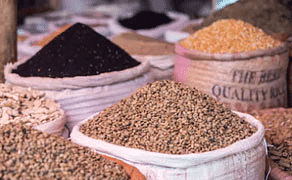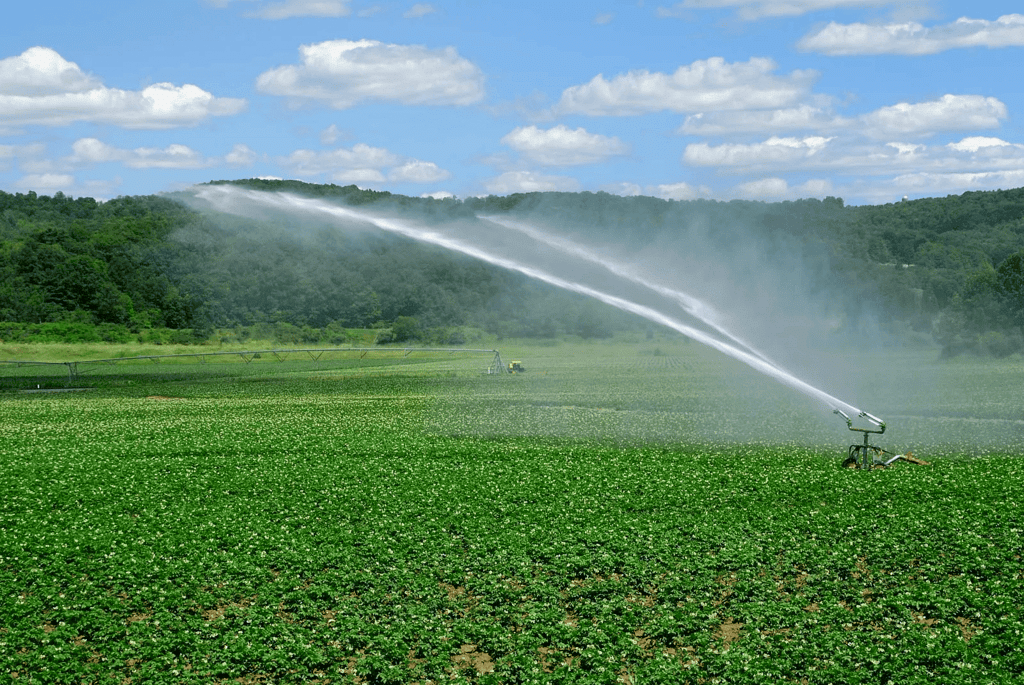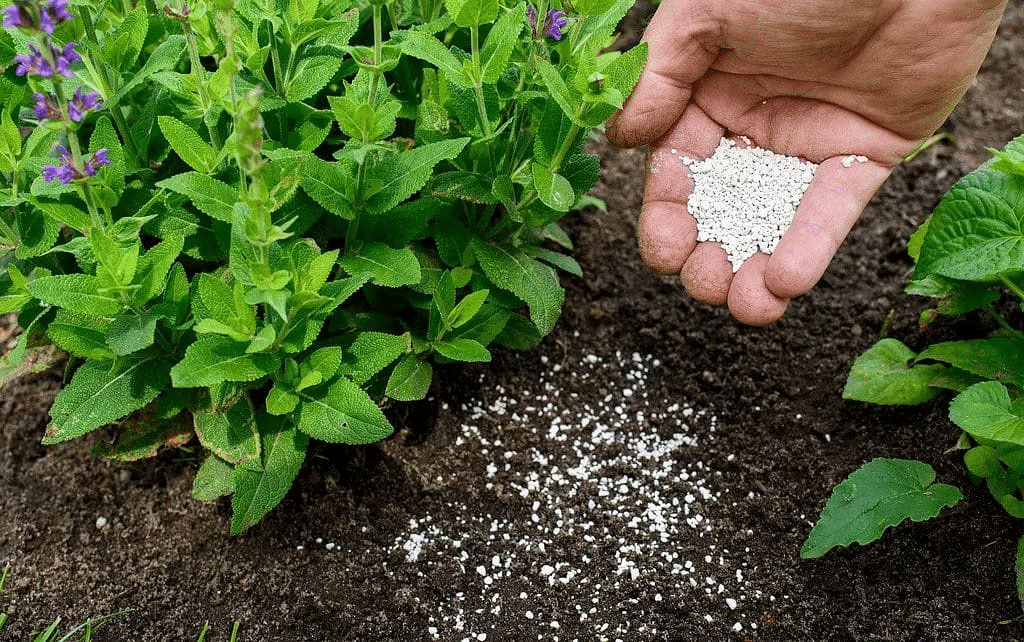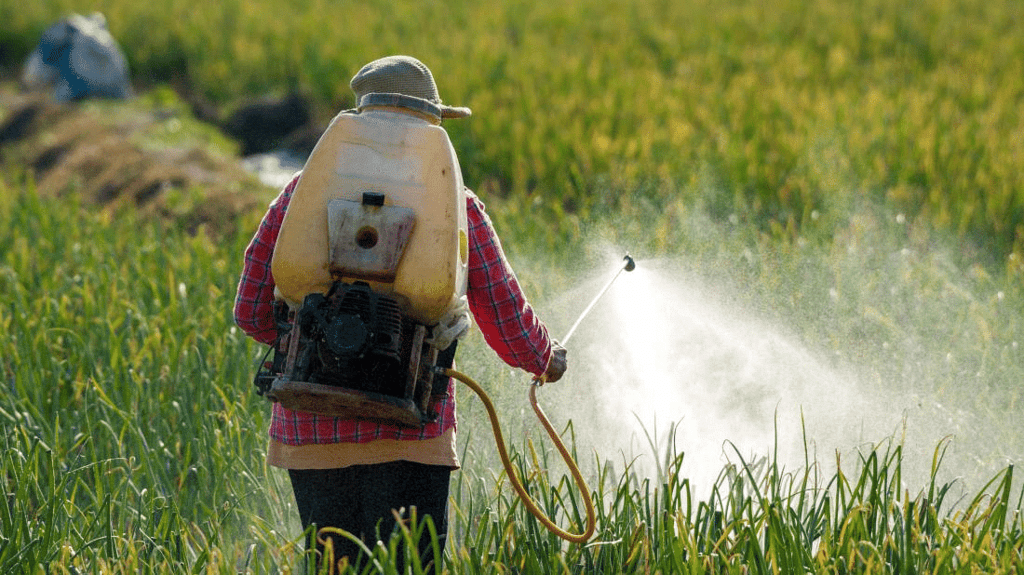Ramesh Singh Summary: Agriculture & Food Management- 2 | Indian Economy for UPSC CSE PDF Download
Agri Commodity Trading
Agri commodity trading is aimed at stabilising prices by market-based price discovery.

- Prices of agrigoods in India a reset or influenced by the MSPs and the wholesale prices (controlled by the wholesalers).
- These prices are not error-free as they are not market-based. In this context, agricommodity market explores market-oriented price determination which brings in multiple benefits to the economy in general and farm community in particular:-
(i) Stable prices benefit sellers as well as buyers.
(ii) Price volatilities due to seasonal variations are minimised
(iii) Stock variations due to export and import are also taken care of.
(iv) A market-based price discovery gives right signal to all stakeholders.
Upstream & Downstream Requirements
- Upstream : The upstream stage of the production process involves searching for and extracting raw materials— it does not do anything with the material itself, such as processing the materials. In upstream, firms simply find and extract the raw material.
- Downstream : The downstream stage in the production process involves processing the materials collected during the upstream stage into a finished product. It further includes the actual sale. End users will vary depending on the finished product. Regardless of the industry involved, the downstream process has direct contact with customers through the finished product.
- Mid stream : Several points in between the two points (the place where raw is extracted and till it reaches the final consumer as finished product) are taken as the mid stream. It depends on the reference point as how many or which stage is considered as the mid stream by an industry.
Supply Chain Management
- A supply chain is a network of facilities and distribution options that performs the functions of procurement of materials, transformation of these materials into intermediate and finished products, and the distribution of these finished products to customers. Supply chain exist in both services, and Manufacturing organisations, although the complexity of the chain may vary greatly from industry to industry and firm to firm.
- Traditionally, marketing, distribution, planning, manufacturing, and the purchasing organisations along the supply chain operated independently. These organisations have their own objectives and these are often conflicting. Marketing's objective of high customer service and maximum sales conflict with manufacturing and distribution goals.
- Supply chain activities cover everything, such as :
(i) Product development
(ii) Sourcing,
(iii) Production
(iv) Logistics
(v) Information systems
Irrigation
The Planning Commission classified irrigation projects /schemes in India on the following lines :
- Major Irrigation Schemes— Those with cultivable command areas (CCA) of more than 10,000 hectares.
- Medium Irrigation Schemes— Those with cultivable command areas (CCA) between 2,000 and 10,000 hectares.
- Minor Irrigation Schemes— Those with cultivable command area (CCA) upto 2,000 hectares. Expansion of irrigation facilities, along with consolidation of the existing systems, has been the main part of the strategy for increasing production of food grains.
Irrigation Efficiency
- Agricultural productivity can be boosted in a big way by enhancing irrigation efficiency in the use of irrigation systems.
 The conventional systems of irrigation have become non-viable in many parts of India due to:(i) Increasing shortages of water(ii) wastage of water through over irrigation
The conventional systems of irrigation have become non-viable in many parts of India due to:(i) Increasing shortages of water(ii) wastage of water through over irrigation
(iii) concerns of salination of soil. - To promote the cause of enhancing water productivity and irrigation efficiency, Government has taken the following steps in the direction —
(i) Pradhan Mantri Krishi Sinchai Yojana (PMKSY) was launched in 2015-16 with the motto of Har Khet Ko Paani for providing end-to-end solutions in irrigation supply chain (i.e., water sources, distribution network and farm level applications).
(ii) Per Drop More Crop component of PMKSY (PMKSY-PDMC) was launched in 2015-16 aimed at water use efficiency at farm level.
(iii) Micro Irrigation Fund (MIF) has been created with NABARD (with a corpus of ₹ 5000 crore) to facilitate the States in mobilizing the resources for expanding coverage of Micro Irrigation.
Water Productivity
- Water productivity in India is very low.
- The overall irrigation efficiency of the major and medium irrigation projects in India is estimated at around 38 per cent.
- As per the NITI Aayog, efficiency of the surface irrigation system can be improved from about 35-40 per cent to around 60 per cent and that of ground water from about 65-70 per cent to 75 per cent.
Fertilizers
- Fertilizers play a crucial role in enhancing agricultural production but can be costly. Since the mid-1960s, there has been a significant increase in fertilizer usage in India, supported by government subsidies amounting to around 8% of the total agricultural GDP. However, this increased use has not led to a proportional rise in agricultural productivity.

- The efficiency of fertilizer use in Indian agriculture has been declining since the 1970s, as indicated by the decreasing response ratio or marginal productivity. For instance, the yield of grain per kilogram of NPK fertilizer dropped from 13.4 kg per hectare in 1970 to 4.1 kg per hectare in irrigated areas by 2021-22.
- In the post-Green Revolution era, there have been imbalances in fertilizer usage, including excessive reliance on urea due to low/distorted prices, neglect of natural nutrient sources like compost and manure, discontinuation of intercropping practices, diversion of subsidized fertilizers to non-agricultural purposes, and indiscriminate fertilizer application leading to soil fertility depletion and salinization.
- Improvements in fertilizer practices in Indian agriculture should focus on crop-responsive and balanced fertilizer use tailored to soil health, the promotion of micro-nutrients and organic fertilizers to address deficiencies, and better nutrient management through a mix of chemical fertilizers, bio-fertilizers, and organic manures based on soil testing.
- Addressing regional disparities in fertilizer consumption across India is crucial. Efforts such as providing soil testing facilities, utilizing information technology, and offering soil fertility maps to farmers can significantly enhance nutrient management practices and improve agricultural output.
Pesticides
- Pesticides are necessary to combat crop losses caused by weeds, pests, diseases, and rodents, which can range from 15 to 25 percent in India.

- India currently uses a relatively low amount of pesticides per hectare, at 0.5 kg compared to 7.0 kg in the United States, 2.5 kg in Europe, 12 kg in Japan, and 6.6 kg in Korea.
- Concerns in India regarding pesticide use include improper application, use of substandard pesticides, and lack of awareness among farmers.
- Pesticide residues found in food products in India pose significant risks to both the environment and human health.
- Policy recommendations include educating farmers on insecticide classification based on toxicity and suitability for aerial application.
- The Central Insecticide Board and Registration Committee (CIBRC) has issued guidelines on pesticide application, dosage, intervals, and toxicity levels, which should be widely shared with farmers.
- Emphasis on Integrated Pest Management (IPM) is essential, incorporating various pest control methods like cultural, mechanical, biological, and selective chemical pesticide use.
- IPM prioritizes bio-pesticides and bio-control agents due to their environmental friendliness, non-toxic nature, and cost-effectiveness.
- Promoting bio-pesticides among small farmers is crucial for enhancing agricultural productivity.
Farm Mechanisation
India needs to introduce better equipment for each farming operation in order to reduce drudgery, to improve efficiency by saving on time and labour, improve productivity, minimize wastage and reduce labour costs for each operation. Agricultural mechanisation in case of India is increasingly needed as :
Agricultural mechanisation in case of India is increasingly needed as :
- Due to shortage of labour for agricultural operations owing to rural-urban migration, shift from agriculture to services and rise in demand for labour in non-farm activities
- Indian agriculture has a high proportion of female work force in both the cultivation and processing stages of farming.
- An effective use of agricultural machinery helps in timely farm operaions for quick rotation of crops on the same land
Agri Credit
- Agri-credit is an important mediating input for agriculture to improve productivity .
- Access to institutional credit enables the farmer to enhance productivity by investing in machinery and purchase of variable inputs like fertilizers, quality seeds, and manure and providing funds till the farmer receives payment from sale of produce, which is at times delayed and staggered. Input use by farmers is sensitive to credit flows to the agriculture sector.
- Agricultural credit has been boosted by the Government in recent years — the Union Budget 2020-21 has set a target of ₹15 lakh crores for 2020-21
Agriculture Extension Services
- Another key input to farm sector is 'agriculture extension services (AES)'. These services can improve productivity by providing timely advisory services to farmers to adopt best practices, technology, meet with contingencies, market information etc.
- The AES (rural advisory services) has been defined as "consisting of all the different activities that provide the in formation and services needed and demanded by farmers and other actors in rural settings to assist them in developing their own technical, organisational and management skills and practices so as to improve their livelihoods and well-being.
PMFBY
- The Government of India launched a new agricultural insurance scheme in January 2016. The new scheme — Pradhan Mantri Fasal Bima Yojana (PMFBY)— has been termed as a path breaking scheme for farmers' welfare.
- The scheme replaced the existing NAIS (National Agricultural Insurance Scheme) of 1999 and is being implemented by both private and public sector companies. Though, the scheme is voluntary for the States, at present, 26 States / UTs are implementing it.
- The scheme's coverage was to be increased from the existing 23 per cent (6.11 crore farmers, as per the Union Budget 2020-21) of gross cropped are a (GCA) to 50 percent by 2018-19, though, it could not be covered due to the announcement of 'Debt Waiver Scheme'.
WTO and The Indian Agriculture
The Prospects
The oldest and the first document regarding the impact of the implementation of the provisions of the WTO, Uruguay Round ( 1995 - 2005) was prepared jointly by the World Bank, the GATT and the OECD.
The Challenges
- If the WTO brings high prospects for Indian agriculture, it also brings in some hard-boiled challenges in front of it.
- These could be seen as individual challenges of the similar economies as well as joint challenges of such economies.
- The first category of challenges pertains to the area of relevant preparations, investment and restructuring of agriculture.
- The second category of challenges are nothing less than a revision in the very agricultural provisions of the WTO itself.
WTO and Agricultural Subsidies Aims
(i) The Boxes
- The agricultural subsidies, in the WTO terminology have in general been identified by 'boxes' which have been given the colours of the traffic lights— green (means permitted), amber (means slow down, i.e., to be reduced ) and red (means forbidden).
- In the agriculture sector, as usual, things are more complicated. The W TO provisions on agriculture has nothing like red box subsidies, although subsidies exceeding the reduction commitment levels is prohibited in the 'amber box'.
(ii) Amber Box
- All subsidies which are supposed to distort production and trade fall into the amber box, i.e., all agricultural subsidies except those which fall into the blue and green boxes.
- These include government policies of minimum support prices (as MSP in India) for agricultural products or any help directly related to production quantities (as power, fertilizers, pesticides, irrigation, etc).
(iii) Blue Box
- This is the amber box with conditions. The conditions are designed to reduce distortions.
- Any subsidy that would normally be in the amber box, is placed in the blue box if it requires farmers to go for a certain production level. These subsidies are nothing but certain direct payments (i.e., direct set-a side payments) made to farmers by the government in the form of assistance programmes to encourage agriculture, rural development, etc.
(iv) Green Box
- The agricultural subsidies which cause minimal or no distortions to trade a e put under the green box.
- They must not involve price support. This box basically includes all forms of government expenses, which are not targeted at a particular product, and all direct income support programmes to farmers, which are not related to current levels of production or prices.
- This is a very wide box and includes all government subsidies like—public storage for food security, pest and disease control, research and extension, and some direct payments to farmers that do not stimulate production like restructuring of agriculture, environmental protection, regional development, crop and income insurance, etc.
(v) S&D Box
- Other than the above-discussed highly controversial boxes of agricultural subsidies, the WTO provisions have defined yet another box, i.e., the Social and Development Box (S&D Box) allows the developing countries for some subsidies to the agriculture sector under certain conditions.
- These conditions revolve around human development issues such as poverty, minimum social welfare, health support, etc., specially for the segment of population living below the poverty line.
(vi) Export Subsidies
For export subsidy the WTO has provisions in two categories:
(i) Reduction in the total budgetary support on export subsidies,.
(ii) Reduction in the total quantity of exports covered by the subsidy.
(vii) NAMA
- The Non-Agricultural Products Market Access (NAMA) is a part of the WTO provisions which deals with the idea of encouraging market reach to the non-agricultural goods of the member countries.
- But the encouragement was objected/opposed by the developing countries, especially pointing to the non-tariff barriers enforced by the developed countries.
- At the Doha Ministerial Conference (November 2001), ministers agreed to start negotiations to further liberalise trade of non-agricultural products. By early 2002, a Negotiating Group on NAMA was created.
(viii) Swiss Formula
- A variety of alternative methods are possible in the process of tariff reductions—some are more common than others.
- Even after a formula or combination of formulas has been agreed upon, the final outcome of tariff reductions may depend on the bargaining capacity between countries.
- The Swiss Formula belongs to the classification of formulas known as having harmonising impact. Since such a formula prescribes a higher/steeper cut on higher tariffs and lower cuts on lower tariffs it is seen to harmonise the rates by bringing the final rates becoming closer and bridging the gap.
National Food Security Act
- The National Food Security Act was enacted by the Ministry of Consumer Affairs, Food and Public Distribution by end-December 2013. India's most ambitious and world's largest social welfare programme provides legal right to about 82 crore people for subsidised foodgrains—a historic initiative towards ensuring food and nutritional security.
- For effective implementation, the Act also contains provisions for reforms in PDS through doorstep delivery of foodgrains, application of information and communication technology (ICT) including end-to-end computerisation, leveraging 'Aadhaar' for identification of beneficiaries, diversification of commodities under TPDS, etc.
- The Act provisions state and district level redressal mechanism with designated officers. The states will be allowed to use the existing machinery for District Grievance Redressal Officer (DGRO), State Food Commission, if they so desire, to save expenditure on establishment of new redressal set up. It also provides for penalty on public servants or authority, if found guilty of failing to comply with the relief recommended by the DGRO.
- The NFSA is being implemented (under the existing TPDS) in all States/UTs covering about 80 crore persons.
Food Processing
- Food processing aims to make food more digestible, nutritious and extend the shelf life. Due to the seasonal variations high levels of wastage or shortages can arise if adequate measures are not taken to preserve and store the food.
- Food processing covers all the processes that food items go through from the farm to the consumers ' plate.
- It includes basic cleaning, grading and packaging as in case of fruits and vegetables and also alteration of the raw material to a stage just before the final preparation.
- Value addition processes to make 'Ready-to-eat' food like bakery products, instant foods, flavored and health drinks, etc., are also included in this definition. Food processing offers an opportunity for the creation of sustainable livelihoods and economic development for the rural communities.
- The components of the scheme are : Mega Food Parks; Integrated Cold Chain and Value Addition Infrastructure; Creation/Expansion of Food Processing & Preservation Capacities; Infrastructure for Agro-processing Clusters; Creation of Backward and Forward Linkages; Food Safety and Quality Assurance Infrastructure; Human Resources and Institutions ; and Operation Greens.
Cash Support to Farmers
- In the wake of rising farm distress, the Government of India, announced a Central Sector Scheme (these schemes are fully financed by the Central Government)— the Pradhan Mantri Kisan Samman Nidhi (PM-KISAN)— in 2019-20 (to be implemented from 2018 Kharif season).
- The scheme provides assured income support of ₹6,000 per year (in 3 equal instalments o f ₹2,000 each) to the beneficiaries.
- Covering all farmers who own land upto 2 hectares. Initially launched for only the small and marginal farm families across the country holding cultivable land upto 2 hectares, its ambit was later expanded to cover all farmer families irrespective of the size of their land holdings.
- The scheme is expected to benefit over 15 crore farmers, as per the Government.
Climate Smart Agriculture
- Climate change can impact the farm sector in different ways — increased variability in temperature, rainfall, extreme weather events like drought and flood
- These incidences ultimately hit the farm community in a very negative way. To fight out these uncertainties development of a climate resilient agro-system is the need of the hour.
- It is in this back drop that the new concept of Climate Smart Agriculture (CSA) has emerged.
- It is an approach that helps to guide actions needed "to transform and reorient agricultural systems to effectively support development and ensure food security under changing climate".
- It aims to provide stakeholders the means to identify agricultural strategies suitable to their local conditions.
|
175 videos|492 docs|159 tests
|
FAQs on Ramesh Singh Summary: Agriculture & Food Management- 2 - Indian Economy for UPSC CSE
| 1. What are the key challenges faced in agriculture and food management? |  |
| 2. How can technology be utilized in agriculture and food management? |  |
| 3. What are some sustainable practices in agriculture and food management? |  |
| 4. How can government policies impact agriculture and food management? |  |
| 5. How can food supply chains be improved in agriculture and food management? |  |

















